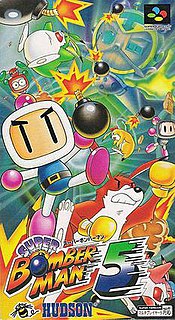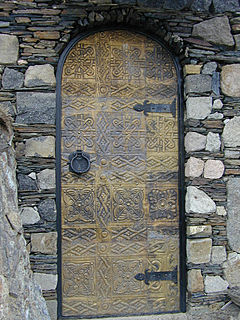
Dig Dug is an arcade video game developed and published by Namco in Japan in 1982. It runs on Namco Galaga hardware, and was published in North America and Europe by Atari, Inc.. Gakken made a tabletop handheld game of Dig Dug in 1982. It was one of a series of three "flip-top" games with a VFD screen and magnifying Fresnel lens.

Mr. Driller is a series of video games developed and published by Namco. Mr. Driller puts the player in the role of a driller moving down through screens of blocks, having to keep his air supply from running out while avoiding being squashed by falling blocks. Games in this series have been released for PlayStation, Dreamcast, WonderSwan, Game Boy Color, Game Boy Advance, Nintendo GameCube, Nintendo DS, WiiWare, Xbox Live, Windows, and iOS in addition to the arcade versions. The main character of these games is Susumu Hori, the son of Taizou Hori, who was the star of the original Dig Dug game.

A saved game is a piece of digitally stored information about the progress of a player in a video game.

Bomberman II is a video game developed and published by Hudson Soft and released for the Family Computer/Nintendo Entertainment System in 1991. The game was titled Dynablaster in Europe.

Dig Dug II, subtitled Trouble in Paradise for Bandai's American NES port, is the arcade sequel to Dig Dug, released by Namco in 1985. It runs on Namco Super Pac-Man hardware but with a video system like that used in Mappy, The Tower of Druaga and Grobda. The only home version of the game was for the NES, which Bandai released in Japan on April 18, 1986 and in North America during 1989.
The Eggerland (エッガーランド) series consists of several puzzle games developed by HAL Laboratory. Its first release was in 1985 for MSX computer systems. Many titles were made in the series and the gameplay is almost exactly the same in every game as well. Only a few changes were made over the years.

Dig Dug: Digging Strike is a Nintendo DS game published by Namco.

Super Bomberman 5, released by Hudson Soft in early 1997, was the final Bomberman game released on the Super Famicom. The game was released in two variations: a standard cartridge and a gold cartridge, which was sold through CoroCoro Comic. The gold cartridge included extra maps in battle mode.

Puggsy is a 1993 puzzle-platform video game developed by Traveller's Tales and released by Psygnosis on Mega Drive and Mega-CD consoles, and on the Amiga home computer. Puggsy is the name of the title character, an orange space hopper-like alien who landed his spaceship on The Planet, intending to return home until his spaceship was stolen by the raccoon natives of the planet.

Legacy of the Wizard, originally released in Japan as Dragon Slayer IV: Drasle Family is a fantasy-themed action role-playing platform game released for the MSX, MSX2 and Famicom in Japan and for the Nintendo Entertainment System in the United States. Legacy of the Wizard is an installment in Falcom's Dragon Slayer series, and one of only five Dragon Slayer games that were localized outside Japan. The game was an early example of an open-world, non-linear action RPG, combining action-RPG gameplay with what would later be called "Metroidvania"-style action-adventure elements.

Kwirk, known in Japan as Puzzle Boy, is an puzzle video game developed and published by Atlus in Japan on November 24, 1989 for the Game Boy. The game was later published in North America in March 1990 by Acclaim Entertainment. On February 22, 1991, Atlus ported and released Puzzle Boy to the PC Engine/TurboGrafx-16 in Japan.

Goof Troop is an action-adventure video game, developed and released by Capcom in 1993 for the Super Nintendo Entertainment System, and based on the television series of the same name. The game can be played in multiplayer mode, wherein one player controls Goofy and the other Max.

Wurm: Journey to the Center of the Earth, released in Japan as Vazolder: The Underground Battle Space, is a multi-genre video game developed by Cyclone System and published by Asmik and SOFEL for the Nintendo Entertainment System in 1991.

Arnold Palmer Tournament Golf is a golf video game for the Sega "Genesis" or "MegaDrive".

Fossil Fighters, known as We Are Fossil Diggers in Japan, is a 2008 video game developed by Nintendo SPD, Red Entertainment, M2, and Artdink and published by Nintendo. It was first released in Japan on April 17, 2008 and was later released in North America on August 10, 2009, and in Australia on September 17, 2009.

Godzilla is a Game Boy video game developed by Compile. Although it was released in 1990, all of the monsters are from the Showa generation. The game is a port of an edition from the MSX console. Also the international version is slightly different from the Japanese version.
Babylonian Castle Saga, also known as The Tower of Druaga, is a media franchise owned by Namco Bandai. It primarily consists of an action role-playing video game series created by Masanobu Endō and released by Namco, beginning with the 1984 arcade game, The Tower of Druaga. The franchise went on to spawn an anime series, also called The Tower of Druaga, in 2008. Much of the setting and many of the characters in the franchise are taken from Babylonian mythology, including the protagonist Gilgamesh, the goddess Ishtar, and the Tower of Babel.

Traps 'n' Treasures is a 2D action role-playing platform video game developed by Roman Werner. It was released by Starbyte Software in July 1993 for the Amiga.

Moai-kun is a puzzle video game developed and published by Konami for the Family Computer in Japan in March 1990. The game derives its themes from Easter Island; the player controls a sentient moai statue that must rescue other moai and escape each stage via a door before the timer expires. Although platforming elements are present, the primary challenge is to find a way to manipulate the objects in each stage to reach the distressed moai and rescue them while still leaving an avenue of escape to the exit door.





















